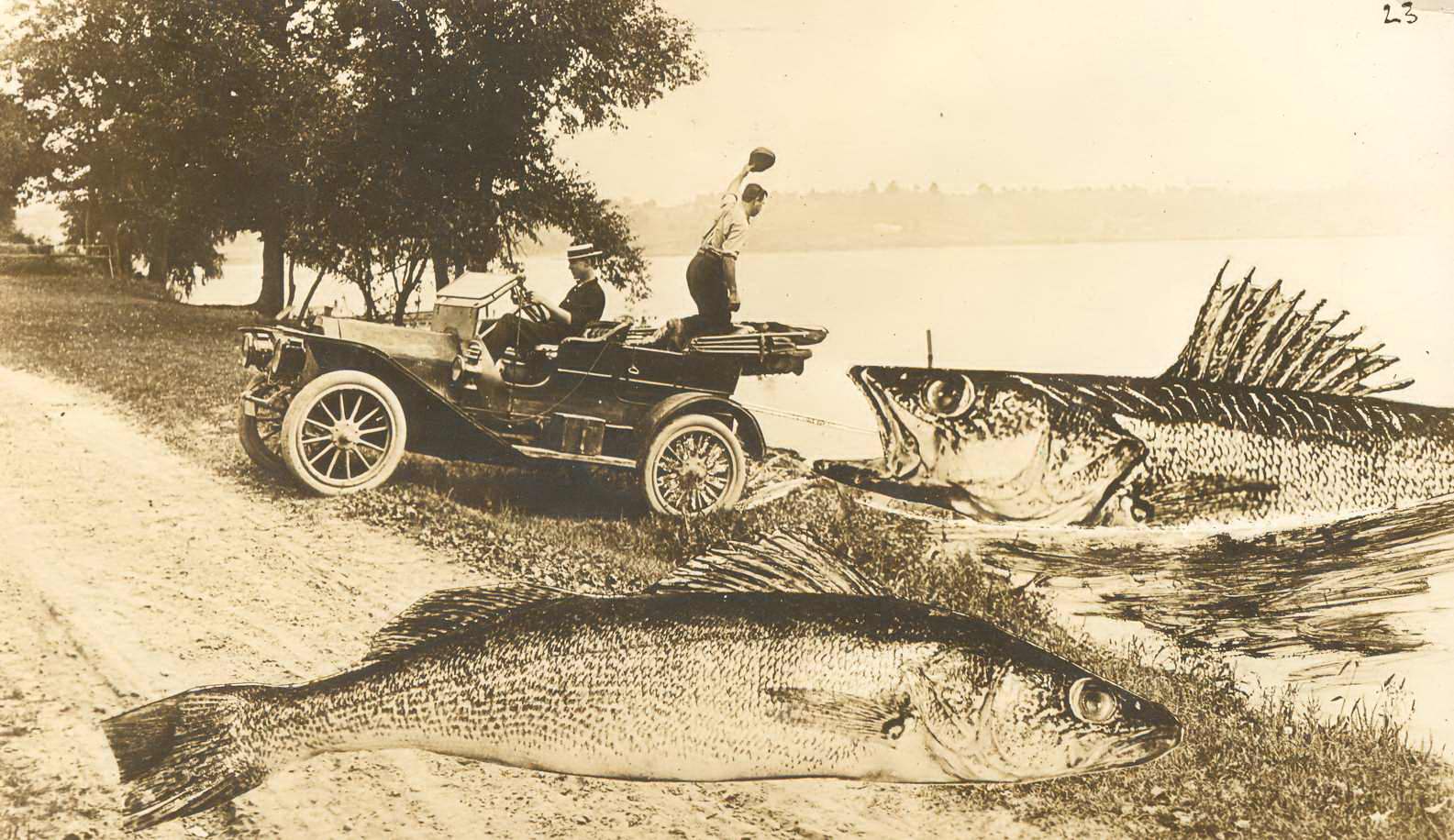For anyone who spends time on Lake Winnebago, it’s easy to see why it’s one of the most important outdoor spaces in our region. The iconic Wisconsin lake—and the Upper Pool lakes flowing into it—are central to recreation, community, and conservation. Whether you’re fishing for walleye, boating with friends, or paddling along the shoreline, these waters shape both the landscape and the way we experience the outdoors.
But what if we told you—that not long ago—the Upper Pool lakes weren’t really lakes at all? And Lake Winnebago? It looked quite different. Once dominated by vast marshes and wild rice fields, this system underwent a dramatic transformation—one shaped not just by time, but by human engineering.
What Lake Winnebago Used to Be
Before dams were installed, Lake Winnebago and the Fox River weren’t the wide, open waterways we know today. Instead, they were surrounded by shallow bays, wetlands, and wild rice stands. The Upper Pool lakes—Lake Butte des Morts, Lake Winneconne, and Lake Poygan—were more like vast marshes than open water.
These wetlands didn’t just shape the landscape; they played a critical role in keeping the ecosystem healthy by reducing the impact of waves, stabilizing shorelines, and supporting fish populations. Those marshy wetlands also provided habitats for fish and waterfowl while helping to filter excess nutrients from the water. Today, efforts to restore healthy waters are helping protect the lake’s health—learn more about our conservation initiatives.

Bog on the Fox River April 1906
A massive floating bog on the Fox River near the Paine Lumber Company, 1906. These bogs, sometimes the size of city blocks, were a visible impact of rising water levels.
Why Were Dams Built on Lake Winnebago?
In the 1850s, engineers had a bold idea: turn the Fox River into a commercial shipping route. The goal was to connect Lake Winnebago to the Wisconsin River at Portage, creating a direct waterway to the Mississippi River. But that plan hit a dead end when the connection was deemed unfeasible, and the full shipping route was never completed.
Although the commercial route was abandoned, the dams that were built still exist today, controlling water levels in the system. These levels are now managed by the U.S. Army Corps of Engineers to minimize flooding— learn more about how water levels are managed.
Curious about why Lake Winnebago’s water levels are managed in winter? Find out here: Lake Winnebago Winter Water Level Management.

Pleasure Yachts at Butte des Morts, 1910
Pleasure boating on the Upper Pool lakes was a favorite pastime in the early 1900s, as seen in this lively dock scene from Butte des Morts.
How Dams Changed Lake Winnebago’s Water Levels
When the dams went in, everything changed. Water levels in Lake Winnebago rose, coupled with high water years like 1922, causing sections of marshland to break apart and form floating bogs that eventually disintegrated—or, in some extreme cases, had to be broken up with dynamite! Over time, aquatic plants moved in, but high water levels during their growing period in spring led to ongoing shoreline erosion and habitat loss. What was once a maze of wetlands transformed into the hazy, open-water lake we see today.
If you’ve ever noticed how rough the lake gets on a windy day, that’s part of the legacy of those historical changes. Less wetlands and aquatic plants means fewer natural buffers to stabilize shorelines, absorb nutrients, and provide habitat for fish and wildlife. This also impacts fishing conditions, as many species of fish require aquatic plant beds for their young. If you’re curious about current fish populations and habitat conditions, check out Wisconsin DNR’s Lake Winnebago fisheries information.

Floating Bog on Lake Butte des Morts
Floating bogs like this one on Lake Butte des Morts formed as water levels rose, breaking apart the original marshland habitat.
How This Affects Lake Winnebago Today
If you’ve ever noticed big waves on a windy day, struggled to find healthy plant beds for bass or walleye fishing, or seen areas of eroded shoreline, you’re witnessing the long-term impacts of these changes. This loss of wetlands and aquatic plants means fewer natural buffers to stabilize shorelines, absorb nutrients, and provide critical fish and wildlife habitat. Lake level management is a critical part of restoring the lakes. Promoting aquatic plant growth in low energy areas will provide critical habitat for fish and competition for harmful algae blooms.
Efforts to restore shorelines and protect fish habitat are underway—see how restoration efforts are improving Lake Winnebago.

Lake Poygan at Winneconne, 1907-1915
Marsh vegetation and waterfront structures along Lake Poygan in Winneconne, before the full effects of dam construction altered water levels and plant communities.
Protecting Lake Winnebago’s Future
Lake Winnebago is more than just a lake—it’s the heart of Wisconsin’s outdoor culture. Whether you’re out there fishing, boating, paddling, or just soaking in the viewthis lake matters—just as it has for generations past. We rely on the dams today for flood mitigation, plus for businesses, hydroelectricity and more. And while we can’t turn back time, we can make choices today that will ensure that Lake Winnebago remains a top destination for boaters, anglers, and outdoor enthusiasts for generations to come.

Trick Photograph of Fishermen, 1914-1916
Early 20th-century photo manipulation at its finest! This playful “trick photograph” exaggerated the size of a walleye catch for comedic effect.
References & Citations
Wisconsin Department of Natural Resources. (1989). Winnebago Comprehensive Management Plan. Retrieved from https://fwwa.org/wp‐content/uploads/2017/01/1989‐Winnebago‐Comprehensive‐Management‐Plan.pdf.
Kahl, R. (1993). Aquatic Macrophyte Ecology in the Upper Winnebago Pool Lakes, Wisconsin. Wisconsin Department of Natural Resources, Technical Bulletin No. 182. Retrieved from https://dnr.wi.gov/files/PDF/pubs/ss/SS0182.pdf.
Image Credit
Paine Lumber Co. & Bog on the Fox River, 1906, Postcard, P6187.18, Oshkosh Public Museum Archives, Oshkosh, Wisconsin.
Floating Bog on Lake Butte des Morts, 1938, Small Format Photograph, P2006.20.2, Oshkosh Public Museum Archives, Oshkosh, Wisconsin.
Four Women Duck Hunters, Gustavus Timm, 1900-1910, Cabinet Card, P1997.34.4, Oshkosh Public Museum Archives, Oshkosh, Wisconsin.
Pleasure Yachts at Butte des Morts, Kropp, E. C., 1910, Postcard, FP2003.20.725, Oshkosh Public Museum Archives, Oshkosh, Wisconsin.
Lake Poygan at Winneconne, Wisconsin, 1907-1915, Postcard, FP2008.2.69, Oshkosh Public Museum Archives, Oshkosh, Wisconsin.
Trick Photograph of Fishermen, 1914-1916, Meyer-Lenzner, P2006.77.171, Oshkosh Public Museum Archives, Oshkosh, Wisconsin.


